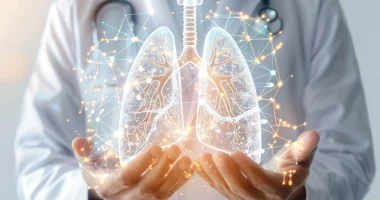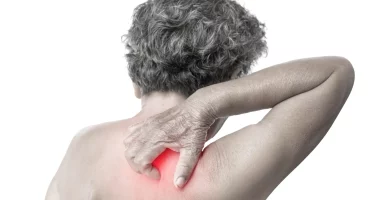Addison’s disease happens when a part of our body called the suprarenal glands doesn’t make enough of two important hormones: aldosterone and cortisol. These hormones help us deal with stress, keep our blood pressure and electrolyte levels in check, and give us energy.
Our suprarenal glands are part of a system in our body called the hypothalamic-pituitary-adrenal (HPA) axis. When we’re stressed, this system releases hormones to help us handle the situation. It’s like getting ready to run away, fight, or freeze.
But in Addison’s disease, the suprarenal glands can’t do their job properly because they’re damaged. Without enough aldosterone and cortisol, people can feel tired, weak, and have trouble digesting food. They might also get dehydrated easily and have changes in their mood.
Symptoms
Symptoms of Addison’s disease can be different for each person and they come on slowly around time. This means they might look like symptoms of other health problems.
Most individuals with Addison’s disease might have:
- Pain in the belly
- Weak muscles
- Not feeling hungry
- Variations in skin color
- Feeling really tired
- Losing weight without trying
Some individuals might experience fewer common symptoms of Addison’s disease, including changes in menstrual periods or having no periods at all, salty food cravings, feeling dizzy or faint upon standing up quickly, experiencing sadness or low mood, having diarrhea, feeling easily irritated, experiencing low blood sugar, losing interest in things they used to enjoy, feeling nauseous, having achy joints, or vomiting. If you notice any of these symptoms, it’s important to seek medical advice, especially if they become more severe or significantly affect your daily life. Seeing a doctor can help in getting the right diagnosis and treatment to manage the symptoms effectively.
Causes
Addison’s disease happens when the outer part of a gland called the adrenal gland, which makes important hormones like aldosterone and cortisol, gets damaged. This damage makes the gland not able to make enough of these hormones.
Primary adrenal insufficiency
Most of the time, Addison’s disease is because the body’s own defense system called the immune system, starts attacking the adrenal gland by mistake. This is called an autoimmune disorder and it’s the cause for about 80 to 90 out of every 100 people with Addison’s disease.
Sometimes, infections can also hurt the suprarenal glands. In some cases, people can get Addison’s disease after having tuberculosis (TB) or if their immune system is weak because of HIV. This can make them more likely to get infections that hurt the adrenal gland.
There are also other reasons why someone might get Addison’s disease, but these are less common. For example, if there’s cancer growing in the suprarenal glands, if the glands are removed during surgery for other health problems, if there’s bleeding into the glands, if there’s a problem in the genes that get passed down, or if certain medications cause side effects.
Secondary adrenal insufficiency
Secondary adrenal insufficiency happens when another gland in the body, called the hypophysis, can’t make enough of a hormone called adrenocorticotropic hormone (ACTH). This hormone tells the suprarenal glands to make cortisol and other hormones. So, if there’s not enough ACTH, the suprarenal glands can’t make sufficient cortisol.
This can happen because of different reasons:
- The body’s own defense system mistakenly attacks the hypophysis (an autoimmune disorder)
- Bleeding in the hypophysis
- Certain genetic diseases that affect how the hypophysis works
- Infections
- Tumors in the hypophysis
- Having surgery to remove the hypophysis to treat other health problems
- Trauma or Brain injuries
Tertiary adrenal insufficiency
Tertiary adrenal insufficiency is a bit different. It happens when someone takes corticosteroid medicines for a long time. These medicines can raise cortisol levels in the body, which then tells the brain to make less of a hormone called corticotropin-releasing hormone (CRH). This hormone usually tells the hypophysis to make ACTH, so if there’s less CRH, there’s less ACTH, and then less cortisol from the suprarenal glands.
Sometimes, after someone stops taking corticosteroids or gets treated for a condition called Cushing’s disease (which causes too much cortisol because of a hypophysis tumor), it can take a while for the suprarenal glands to start working normally again, even if the medicine dose is lowered slowly.
Risk factors
Some conditions that affect hormones or a part of our body called the HPA axis can make someone more likely to get Addison’s disease. These conditions include:
- Chronic thyroiditis
- Type 1 diabetes
- Dermatitis herpetiformis
- Hypoparathyroidism
- Pernicious anemia
- Myasthenia gravis
- Graves’ disease
- Vitiligo
People usually start noticing symptoms of Addison’s disease when they’re around 30 and 50 years old. It seems to happen more often in people who were assigned female when they were born.
Diagnosis
Diagnosing Addison’s disease happens in two steps: first, checking if aldosterone and cortisol levels are low, and second, finding out the reason.
To check cortisol levels, doctors might do these blood tests:
- A CRH stimulation test
- An ACTH stimulation test
- An insulin tolerance test
To figure out what’s causing the low hormone levels, doctors might also do:
- Tests to see how the immune system is reacting, like antibody tests
- CT scans to look for tumors, bleeding, or infections on the suprarenal glands
- Tests to see if someone has tuberculosis (TB)
Treatment
Treating Addison’s disease usually means taking medicines every day for life and sometimes making changes to how you live.
Medicines
For individuals with primary adrenal insufficiency, they’ll need to take medicines every day to replace aldosterone and cortisol. There are a few options for cortisol replacement therapy:
- Hydrocortisone, which is the most common medicine used for Addison’s disease
- Dexamethasone
- Prednisolone
Diet
For those who don’t have enough aldosterone, eating foods with a lot of salt might help. But sometimes, a medicine called fludrocortisone can help balance sodium levels in the body without needing to eat more salt.
Eating foods with lots of calcium and vitamin D can also be good because it helps to lower the risk of getting weak bones (osteoporosis) when someone takes corticosteroids for a long time.
Summary
Addison’s disease happens when someone’s body can’t make sufficient aldosterone or cortisol, which are hormones that help deal with stress. This can be because of damage or sickness in the suprarenal glands, which are small organs in the body.
The most usual type of Addison’s disease affects the suprarenal glands directly, and it’s called primary adrenal insufficiency.
Symptoms of Addison’s disease include feeling very tired, and sad, losing weight without trying, having weak muscles, and belly pain. Taking medicine every day to replace cortisol can help people feel better and keep living their lives as usual.









